
A crane fly is any member of the dipteran superfamily Tipuloidea, which contains the living families Cylindrotomidae, Limoniidae, Pediciidae and Tipulidae, as well as several extinct families. "Winter crane flies", members of the family Trichoceridae, are sufficiently different from the typical crane flies of Tipuloidea to be excluded from the superfamily Tipuloidea, and are placed as their sister group within Tipulomorpha.

The Tephritidae are one of two fly families referred to as fruit flies, the other family being the Drosophilidae. The family Tephritidae does not include the biological model organisms of the genus Drosophila, which is often called the "common fruit fly". Nearly 5,000 described species of tephritid fruit fly are categorized in almost 500 genera of the Tephritidae. Description, recategorization, and genetic analyses are constantly changing the taxonomy of this family. To distinguish them from the Drosophilidae, the Tephritidae are sometimes called peacock flies, in reference to their elaborate and colorful markings. The name comes from the Greek τεφρος, tephros, meaning "ash grey". They are found in all the biogeographic realms.

Trichoceridae, or winter crane flies, of the order Diptera are long, thin, delicate insects superficially similar in appearance to the Tipulidae, Tanyderidae, and Ptychopteridae. The presence of ocelli distinguishes the Trichoceridae from these other families. There are approximately 160 known species. The adults can be found flying in the fall and the spring and some are active even in the winter, hence their common name. They form dancing, loose swarms of mostly males. Adults can also be found resting inside caves and hollow logs. Larvae occur in moist habitats where they feed on decaying organic matter. They are of no economic importance.
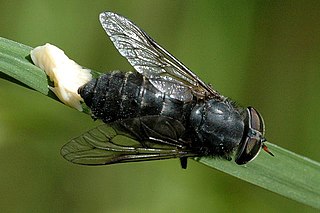
Hybomitra is a genus of horse flies in the family Tabanidae. There are at least 240 described species in Hybomitra.

Campiglossa is a genus of fruit flies in the family Tephritidae. There are at least 190 described species in Campiglossa.
Laphria ferox is a robber fly in the genus Laphria, in the order Diptera ("flies").
Chrysotus pallipes is a species in the family Dolichopodidae, in the order Diptera ("flies").
Taracticus ruficaudus is a robber fly in the family Asilidae, in the order Diptera ("flies").
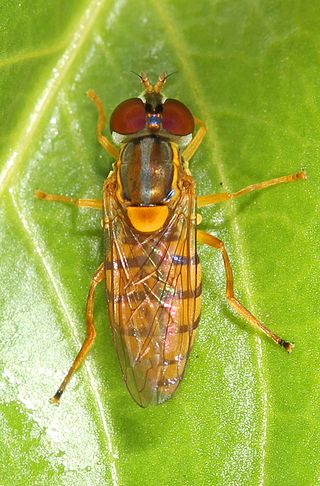
Toxomerus jussiaeae is a species in the family Syrphidae, in the order Diptera ("flies").
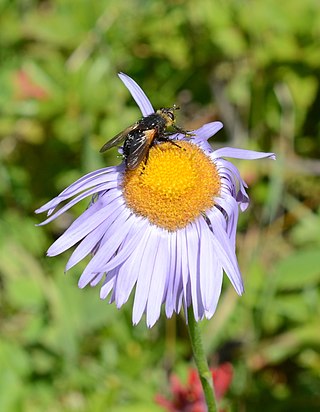
Tachina latianulum is a species in the family Tachinidae, in the order Diptera ("flies"). Tachina latianulum is found in North America.
Forcipomyia brevipennis is a species of fly in the family Ceratopogonidae, in the order Diptera ("flies"). It is found in Europe and North America.
Tipula hermannia is a species in the family Tipulidae, in the order Diptera ("flies").
Paravilla mercedis is a species in the family Bombyliidae, in the order Diptera ("flies").
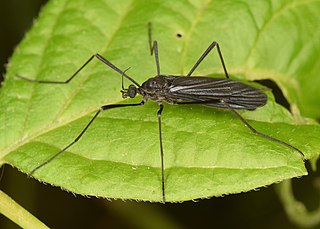
Eugnophomyia luctuosa is a species in the family Limoniidae, in the order Diptera ("flies").
Laphria virginica is a species of robber flies in the genus Laphria, in the order Diptera ("flies").
Condylostylus flavipes is a species in the family Dolichopodidae, in the order Diptera ("flies").
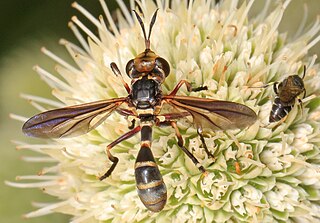
Physoconops is a genus of thick-headed flies in the family Conopidae. There are about 13 described species in Physoconops.
Oreogetonidae is a family of flies. There is at least one genus, Oreogeton, and at least 30 described species in Oreogetonidae.
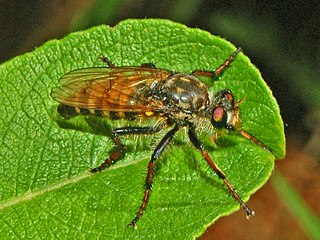
Cyrtopogon is a genus of robber flies in the family Asilidae. There are at least 120 described species in Cyrtopogon.
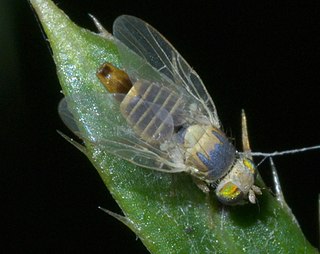
Terelliini is a tribe of fruit flies in the family Tephritidae. There are at least six genera and about 104 described species in Terelliini.










